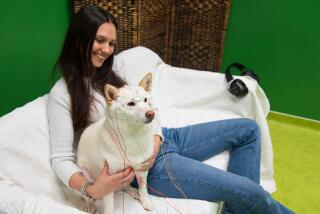Science/Medicine : Device Gauges the Universality of Animal Language
- Share via
In the 1950s, Bell Laboratories developed a machine called a sound spectrograph for the analysis of the human voice. The device quickly came to the attention of wildlife biologists, particularly ornithologists who were interested in using it to analyze animal sounds and calls.
Although we may hear such sounds as a single tone, they actually consist of a combination of numerous pitches.
The sound spectrograph contains a bank of frequency filters, each of which responds to a specific range. It breaks down incoming sounds into their frequency components. A stylus responds to the various signals and makes marks on a strip of paper, drawing a “contour map” of the sound. Frequency is shown vertically, duration horizontally.
According to Eugene Morton, an ornithologist at the National Zoo, it doesn’t take a great deal of practice before one can begin “seeing” a bird in this two-dimensional way.
Over the years, as a student of bird song, Morton immersed himself in the sonograms of thousands of birds. Eventually he began to perceive a pattern or “vocabulary” emerging. He also knew a bit about the sounds that mammals make and how they appeared in sonograms. They too appeared to share the pattern. Morton saw, he said, “not a trend, but what seemed to be a law.”
So he began to test his hypothesis with zoo colleagues, experts in communication among creatures such as elephants and tigers. There followed a “pretty boring” period involving a long and painstaking search of scientific literature and comparisons of hundreds of sonograms.
Eventually the thesis was confirmed and Morton announced the existence of a nearly universal language of “expressive sound symbols” among animals.
Today a machine is available that displays the sonogram on a screen at the same time it is heard. “You see it like water falling past you,” Morton said.






